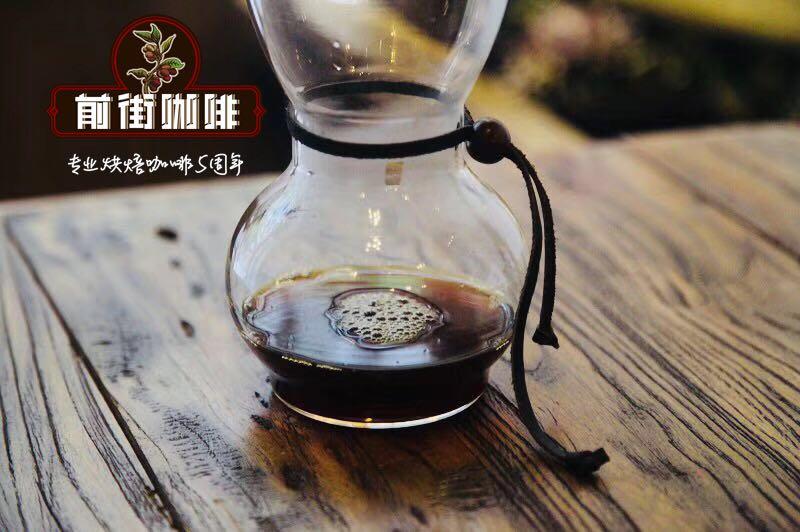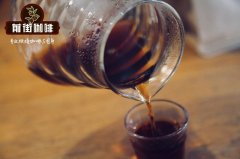Besides curry, there is coffee in India! Indian Coffee Monsoon Malaba Coffee have you ever heard of it?

Professional coffee knowledge exchange more coffee bean information please follow the coffee workshop (Wechat official account cafe_style)
India has three treasures: monsoon Malaba, Mysore Gold Brick and Royal Water washing Busta.
Malaba is located in southwest India, facing the Indian Ocean. Due to the fertile soil and the blowing of the Indian Ocean monsoon, Malaba has been an important rice-producing area since ancient times, while the mountains are coffee-growing areas.
Indian monsoon Malaba, not sour, with deep mud flavor and muskmelon flavor, is also a good material for making Espresso, which can increase the consistency and mellow taste.
Legend has it that ancient merchant ships bought coffee beans along the coast of Malaba and carried them back to Europe. Along the way, the coffee beans turned golden yellow by the Indian Ocean monsoon, while the flavor became thicker and slightly muddy. Businessmen took the opportunity to sell innovative goods, won praise, and became today's famous Indian monsoon Malaba. The speed of early maritime transport was slow.
This Indian coffee bean was blown by the moist sea breeze during the long shipping to Europe, resulting in interesting changes in the flavor and appearance of the beans, from green to golden, with a mellow taste and very low acidity. Developed a strong nutty and shell flavor. Now with the progress of science and technology, the special flavor of this raw bean has been reproduced artificially, collecting selected AA raw beans, exposing them to the air during the monsoon season, and then constantly turning them to fully accept the moist sea breeze, and then through artificial fine selection, its special flavor is reborn.
The wind-stained coffee needs to be made with sun-dried beans, and the factory faces to the west in order to catch the salty monsoon blowing from the southwest. The windows of the wind-soaked field of coffee beans are all opened. after a certain degree of wind stains, the raw beans cannot be filled. Coffee bags should not be piled too dense to avoid mildew, and coffee beans should be poured out from time to time to replace linen bags to avoid mildew. The wind-soaked period is about 12 to 16 weeks. After it is ripe, it is treated with tobacco smoke to drive away the weevil. Finally, the beans are screened manually to pick out the failed beans that have not turned golden. After three to four months of wind stains, the volume of green coffee beans increased by one to two times, the weight and density decreased, the moisture content was about 13%, and the quality and quantity changed significantly.
After this process, coffee beans are equivalent to being "pickled" by sea breeze and moist air in the rainy season, the original acidity decreases, while the mellow thickness increases, and produces a special earthy flavor and dried fruit flavor, and sometimes has a unique spice flavor, which is difficult to feel in coffee from any place of origin.
Indian monsoon Malaba coffee is graded by particle size, only the most advanced can be included in the selection of coffee, graded from high to low: Monsooned Malabar AA, Monsooned Basanally, Monsooned Arabica-BBB, Monsooned Arabica Triage.
Indian Malaba coffee beans are soft beans that are strong and dry outside. There is a ripe mellow flavor peculiar to "aged Sumatra mantenin". The taste of Xuanmi tea is very special, with a light balance of grass, acidity and bitterness. it is also suitable for blending comprehensive coffee beans.
Important Notice :
前街咖啡 FrontStreet Coffee has moved to new addredd:
FrontStreet Coffee Address: 315,Donghua East Road,GuangZhou
Tel:020 38364473
- Prev

Panama kotowa duncan estate coffee introduction.
Professional coffee knowledge exchange More coffee bean information Please pay attention to coffee workshop (Weixin Official Accounts cafe_style) Panama's Baru volcano has a unique micro-climate and volcanic terrain area, is Panama's highest mountain, the main peak elevation of 3,474 meters (11,398 feet), is Panama's highest peak. The volcano stretches for about 35 kilometers along the border with Costa Rica.
- Next

The taste characteristics of the long-tailed cuckoo from Hartman Manor in the Walken area of Panama.
Professional coffee knowledge exchange more coffee bean information please follow the coffee workshop (Wechat official account cafe_style) Chirqui province is now the concentration of Panamanian boutique coffee, the Balu volcano next to the Volcan (Vulcan) and Boquete are famous. Hartman Manor founder Mr. Alios St Hartmannm began growing coffee in the Candela area in 1912. Its
Related
- Detailed explanation of Jadeite planting Land in Panamanian Jadeite Manor introduction to the grading system of Jadeite competitive bidding, Red bid, Green bid and Rose Summer
- Story of Coffee planting in Brenka region of Costa Rica Stonehenge Manor anaerobic heavy honey treatment of flavor mouth
- What's on the barrel of Blue Mountain Coffee beans?
- Can American coffee also pull flowers? How to use hot American style to pull out a good-looking pattern?
- Can you make a cold extract with coffee beans? What is the right proportion for cold-extracted coffee formula?
- Indonesian PWN Gold Mandrine Coffee Origin Features Flavor How to Chong? Mandolin coffee is American.
- A brief introduction to the flavor characteristics of Brazilian yellow bourbon coffee beans
- What is the effect of different water quality on the flavor of cold-extracted coffee? What kind of water is best for brewing coffee?
- Why do you think of Rose Summer whenever you mention Panamanian coffee?
- Introduction to the characteristics of authentic blue mountain coffee bean producing areas? What is the CIB Coffee Authority in Jamaica?

